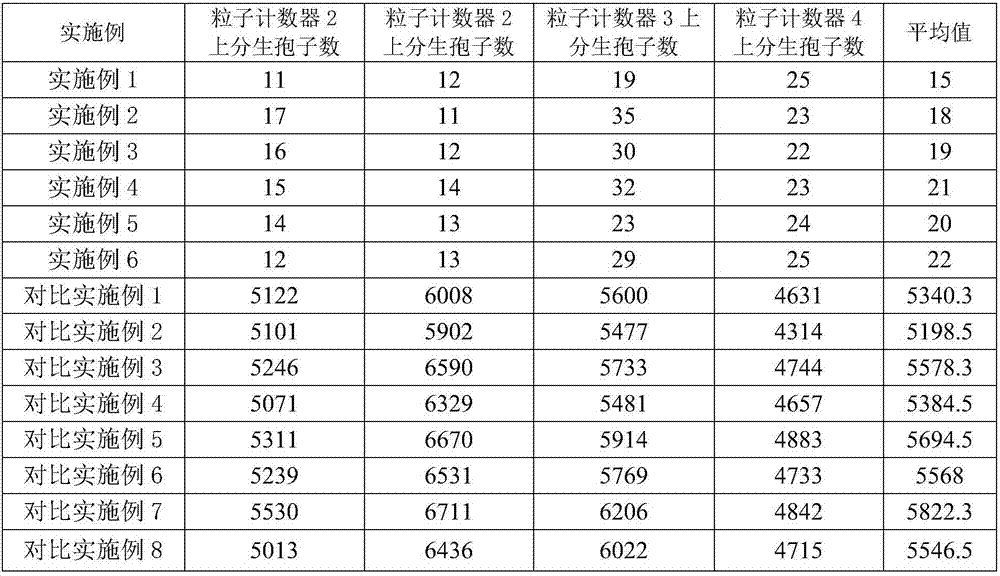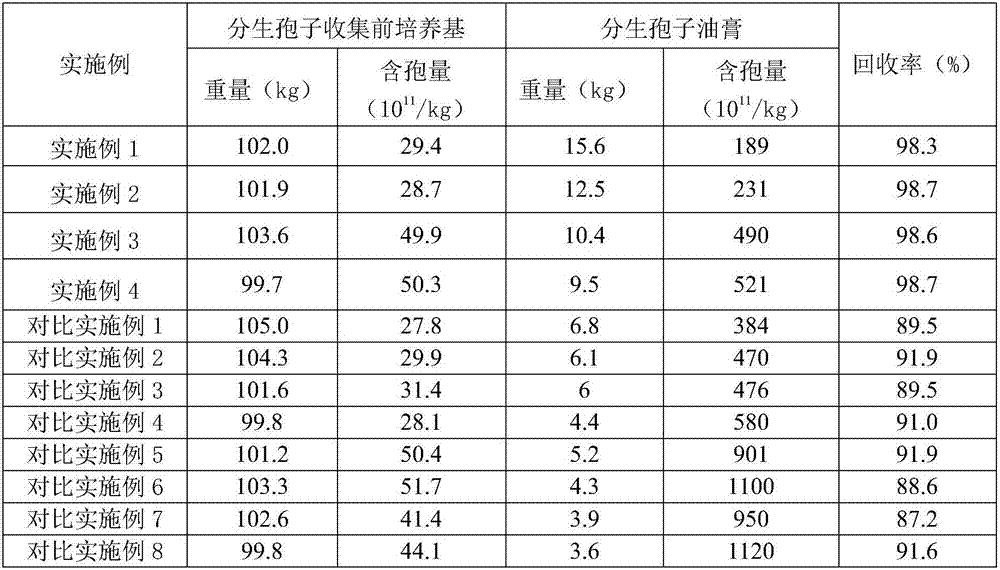Entomopathogenic fungus conidium collection process
A technology of pathogenic fungi and conidia, which is applied in the field of conidia collection technology, can solve the problems of entomopathogenic fungi conidia flying around, affecting the air quality in the operating area, and endangering the health of personnel, so as to avoid air pollution and endanger the operation The health of personnel, the effect of enhancing the insecticidal effect, and improving the recovery rate
- Summary
- Abstract
- Description
- Claims
- Application Information
AI Technical Summary
Problems solved by technology
Method used
Image
Examples
Embodiment 1
[0021] Conidial culture of Metarhizium anisopliae, the CQMa421 strain of Metarhizium anisopliae was inoculated on a 1 / 4 strength Savoy liquid medium and cultured at 26°C for 3 days to obtain the liquid strain of Metarhizium anisopliae; The liquid strain was inoculated on the sterilized rice culture medium (the rice was soaked in tap water at 26°C for 4 hours, then drained, sterilized and cooled to room temperature to prepare the rice culture medium), and the rice culture medium was placed Fermented at 26°C for 15 days until the sporulation matures. The conidia of Metarhizium anisopliae were collected, and the rice medium containing mature spores and soybean salad oil were mixed at a weight ratio of 1:2.5 (100Kg of mature spore-forming rice medium and 250Kg of soybean salad oil) at 15°C Under the process temperature, stir at 20 rpm for 10 minutes to obtain a dispersion system; place the aforementioned dispersion system on a 120 um screen and filter, and first use a vacuum dryer ...
Embodiment 2
[0023] Conidial culture of Metarhizium anisopliae, inoculate the CQMa102 strain of Metarhizium anisopliae on a 1 / 4 strength Savoy liquid medium and culture it at 27°C for 4 days to obtain the liquid strain of Metarhizium anisopliae; The liquid strain was inoculated on the sterilized rice culture medium (the rice was soaked in tap water at 27°C for 4 hours and then drained, then sterilized and cooled to room temperature to prepare the rice culture medium), and the rice culture medium was placed Fermented at 27°C for 15 days until the spores mature. Conidia of Metarhizium anisopliae were collected, and the rice medium containing mature spores and soybean salad oil were mixed at a weight ratio of 1:4 (100Kg of mature spore-containing rice medium and 400Kg of soybean salad oil) at 17°C Under the process temperature, stir at 20rpm for 10 minutes to obtain a dispersion system; place the aforementioned dispersion system in a 150um screen and filter, and the obtained filtrate is first ...
Embodiment 3
[0025] For conidia culture of Beauveria bassiana, the CQBb101 strain of Beauveria bassiana was inoculated on a 1 / 4-strength Savoy liquid medium and cultured at 25°C for 3 days to obtain a liquid strain of Metarhizium anisopliae; The aforementioned liquid strains were inoculated on the sterilized wheat bran medium (the wheat bran and tap water were mixed according to the weight ratio=2:1, then mixed well, and then sterilized and cooled to room temperature to prepare the wheat bran medium). The wheat bran medium was fermented at 25°C for 15 days until the sporulation matured. The conidia of Beauveria bassiana were collected, and the wheat bran medium containing mature spores and rapeseed oil were mixed at a weight ratio of 1:5 (100Kg rice medium containing mature spores and 500Kg rapeseed oil). Under the process temperature of ℃, stir at 5 rpm for 10 minutes to obtain a dispersion system; place the aforementioned dispersion system on a 120 um screen and filter, and use a vacuum d...
PUM
 Login to View More
Login to View More Abstract
Description
Claims
Application Information
 Login to View More
Login to View More - R&D
- Intellectual Property
- Life Sciences
- Materials
- Tech Scout
- Unparalleled Data Quality
- Higher Quality Content
- 60% Fewer Hallucinations
Browse by: Latest US Patents, China's latest patents, Technical Efficacy Thesaurus, Application Domain, Technology Topic, Popular Technical Reports.
© 2025 PatSnap. All rights reserved.Legal|Privacy policy|Modern Slavery Act Transparency Statement|Sitemap|About US| Contact US: help@patsnap.com


